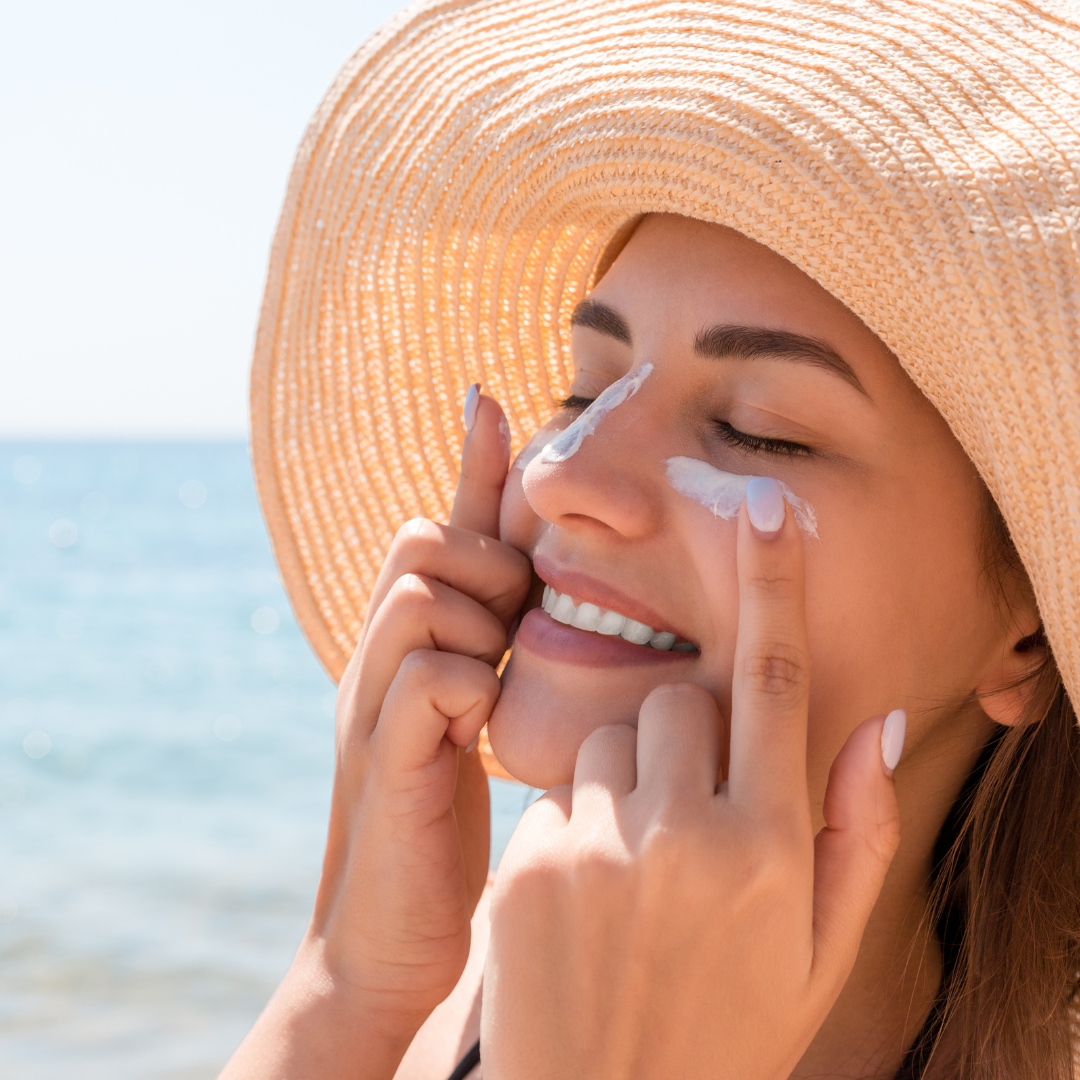In the realm of summer skincare, there's a hot topic that's been making waves - the safety of chemical sunscreens. As the temperatures rise and the sun beckons us outdoors, the debate intensifies. This blog delves into the sizzling controversy, urging you to leave chemical sunscreens behind and wholeheartedly embrace the power of natural protection for a sensational summer.

Chemical Sunscreens Under Scrutiny
The Permeation Predicament: A major concern with chemical sunscreens revolves around the ability of their active ingredients to be absorbed by your skin. Some of these chemicals, such as oxybenzone and octinoxate, can enter your bloodstream. This has sparked worry about what this means for your body's overall health. The extent of the health risks remains a subject of ongoing research and debate.
Sensitivity and Reactions: For those with sensitive skin, chemical sunscreens can sometimes lead to unpleasant reactions. This can include redness, itching, and allergic responses. This sensitivity issue has driven many individuals to seek safer alternatives that are gentler on their skin.
Environmental Disruption: The harmful impact of certain chemical sunscreen ingredients on our beloved coral reefs is a topic of increasing concern. Some chemicals found in many traditional sunscreens have been linked to coral bleaching and damage. When you take a dip in the ocean, these chemicals can wash off your skin and wreak havoc on underwater ecosystems, contributing to the decline of our precious coral reefs.
Things to look out for in a sunscreen and a way to know that it contains other chemicals:
Active Ingredients: Check the active ingredients listed on the sunscreen product. Chemical sunscreens typically contain compounds like avobenzone, octisalate, octocrylene, homosalate, or octinoxate. These ingredients absorb and filter UV rays, as opposed to physical (mineral) sunscreens that use zinc oxide or titanium dioxide. Sometimes chemical sunscreens also use the natural minerals in combination with the natural minerals. In general if you can't pronounce it or if it sounds strange, then it's most likely a chemical on that ingredients list.
SPF Terminology: While SPF (Sun Protection Factor) is a measure of a sunscreen's effectiveness, some chemical sunscreens might use terms like "ultra-light," "fast-absorbing," or "broad-spectrum" on the packaging. These terms can be hints that the sunscreen contains chemical UV filters.
Marketing Terminology: Look for words like "non-greasy," "transparent," or "invisible" on the packaging or in product descriptions. These terms are often associated with chemical sunscreens that provide a more cosmetically elegant finish.
Absence of Zinc Oxide or Titanium Dioxide: If the product does not list zinc oxide or titanium dioxide as active ingredients, it's more likely to be a chemical sunscreen.
Brand Awareness: Some brands are known for producing specific types of sunscreen. For example, certain brands are recognized for their mineral-based sunscreens, while others are associated with chemical sunscreens. Familiarizing yourself with these brands can be helpful.
Remember that the best way to know for sure is to check the ingredient list, as it will explicitly state the active ingredients used in the sunscreen. Reading the fine print on the packaging and conducting some research on the product or brand can also provide you with more information on the sunscreen's composition and characteristics.
Enter the Hero: Natural Sunscreen
Mineral Magic: Natural sunscreens, often referred to as mineral sunscreens, employ mineral marvels such as zinc oxide and titanium dioxide as their active ingredients. These heroes sit atop your skin, acting as a physical barrier to reflect and repel harmful UV rays. Mineral-based sunscreens are far less likely to be absorbed by the skin, making them a safer choice for those concerned about chemical absorption.

Gentle on the Skin: For those with skin sensitivities, natural sunscreens are often a sigh of relief. They contain fewer irritants and allergens, making them a better choice for individuals with delicate skin.
Eco-Warrior: Mineral-based natural sunscreens are coral-friendly. This means that by choosing them, you're actively reducing your environmental footprint. You can enjoy your beach vacation without the guilt of contributing to coral reef damage.
Picking the Perfect Natural Sunscreen: Your Summer Skin Saviour
Mineral Checklist: When searching for a natural sunscreen, scour the ingredient list and look for zinc oxide or titanium dioxide as the active ingredients. These minerals are your assurance of safety and effectiveness.
Broad Spectrum Brilliance: Opt for products labeled "broad-spectrum" to ensure comprehensive protection against both UVA and UVB rays.
Water Wonder: Planning to take a dip in the sea or pool? Pick a water-resistant natural sunscreen for continuous protection, all while safeguarding our aquatic ecosystems.
SPF Smarts: Don't forget to select an SPF level that suits your skin type and the intensity of your sunny affairs. SPF 30 or higher is a safe bet to ensure you're well-protected.
By bidding farewell to chemical sunscreens and embracing the natural alternative, you're not only taking a stand for your skin's health but also for the planet's well-being. Keep the sizzle in your summer, protect naturally, and let your sun-soaked adventures shine!

